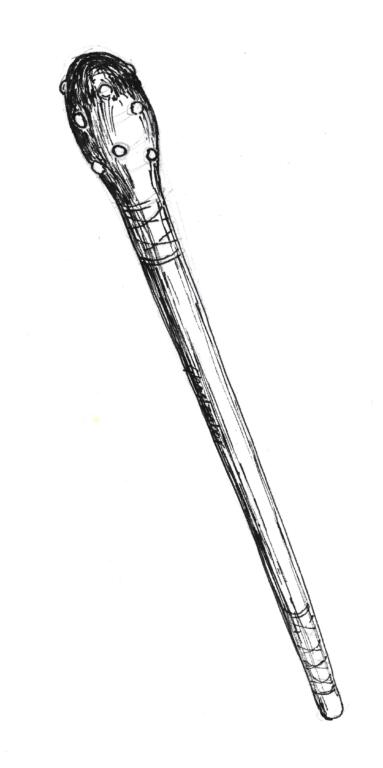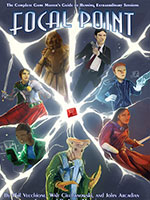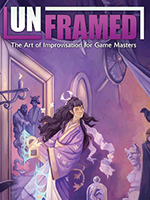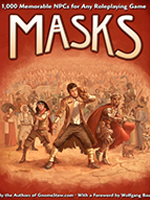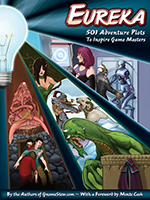You don’t need me to tell you there are A LOT of RPGs out there. There is a huge, diverse, and wildly creative selection to choose from. Just counting those that involve medieval (ish) combat, this is still true. But despite the huge variety of mechanics, trends in modern game design, and dramatic reimagining of these games, there is one mechanic that is remarkably consistent: variable dice damage for weapons.
All d20 systems, as far as I know, but also percentile systems and a whole slew of other games, use different damage dice for different weapons and nothing else. That’s all you get to distinguish a short sword from a lance. And that’s not a problem if you want your combat abstracted and you like what you know. You might be perfectly happy that nobody ever uses a spear in your games, even though they were the most used weapon for thousands of years. Or that the half dozen or so blunt weapons in your game are all but redundant, bar fighting undead. Apart from the fact that I find it fundamentally unconvincing that a blow from a short sword would hurt less than a blow from a long one, should it strike me, there is an intrinsic disadvantage to variable dice. It doesn’t take long for the modifiers your player characters get to outweigh the difference between those die types. The difference in the medium results of a d6 and a d8 is only 1 (3.5 and 4.5 respectively). Your d8 wielding player character only benefits from his choice of weapon one in four die rolls (I know I’m simplifying the laws of probability here, but you get the gist…). And once other rules kick in, especially with level-based progression, that 1 to 2 points of damage soon vanishes beneath the avalanche of bonuses, additional damage dice, magic weapons, or increased Attributes.
Soon enough, the weapons are just flavour. Which is fine. I guess.
But to me it seems a wasted opportunity. In 2014, 5e introduced Qualities to its weapons. It wasn’t the first system to use the idea, and they mainly took the place of pre-existing rules. Still, they added some interest, but they were fairly limited. They didn’t change the way players thought about their characters’ weapons. I am well aware that most people don’t want to bog down their combat with complex rules, cross-referencing weapon types with armours, as I tried to do with homebrew rules back when I was young and foolish and didn’t know better. But Reach and what a weapon does on a critical success, can easily make combat more interesting. And fun!
In fact, in many ways, the other stuff can do more to distinguish one weapon from another, more to add flavour to the fight, more to make your character stand out, and more to make a fight, well, interesting, than different-shaped dice. Ever get the feeling that some (or all?) of your players are ‘tuning out’ when it isn’t their turn in combat? That might be because it’s predictable. And I mean that the process of resolving combat has become predictable, not just the outcome. Think about it: most of these sorts of games, whether d20 based or not, generally tend towards the ‘roll dice, add modifiers, hit a target number, roll damage, modify, end’. Sometimes there is an option to parry, or to dodge, or you might compare scores, like in Runequest, to see the outcome. But it matters little whether you’re swinging a longsword or a war hammer. The weapon you are using is unlikely to alter the outcome of the fight, other than its duration. Not really.
So, what can we do about it?
First off, let’s think about Reach.
Weapons vary a lot in length. If you know what you’re doing with one, that can really impact how easy or difficult it is to strike your opponent or, more importantly, for them to strike you. I got some first-hand experience of this when my son was little, and we fenced with garden canes. Yeah, cute, right? Until he picked up the garden hoe and I realised I was in trouble! Because it is incredibly difficult to ‘parry’ a long, sharp, stabby thing with a one-handed, short, stabby thing (or slashy or bashy thing), unless you have a big round woody thing. Even if you stop them hitting you, you have to get past that to hit them. Sure, a swordsperson could get past a spear-wielder and strike, if they are nimble, I hear you say. Well yes… maybe that should be part of the game?

Axes are often portrayed as particularly destructive in RPG combat systems. They have a tendency to sever things…
Modiphius’ “Conan: Adventures In An Age Undreamed” (2016, now out of print) used Reach scores of 1 to 4, assigned individually to weapons. Where Reach scores differed, the lower was subtracted from the higher and the difference became a disadvantage to the wielder of the shorter weapon. When I ported this rule to a d20 game, I assigned scores of 1 to 5, because that way, I could easily give a score of 5 to weapons already listed as having Reach. After play-testing, only a Pike would ever get Reach 5 in practice.
If a Pike has Reach 5 and bare hands have a Reach of 0, you can pretty well fit other weapons to the scale: dagger and short sword have Reach 1, normal sword Reach 2, bastard sword Reach 3, two-hander Reach 4. You can work out most weapons from that kind of scale.
In practice, you immediately start seeing the humble spear getting picked up a lot more, with its Reach 4. In a game I ran recently, two stalwart adherents to the axe and shield model suddenly realised my NPC guards were getting a big advantage from the reach their spears gave them. As soon as they (eventually) dispatched them, they snatched up those spears like they were yreasure! Which, of course, they were…
Weapon Qualities are another thing altogether. Dungeons & Dragons 3.5, which had its issues, varied the Critical Threat range of its weapons, which was fun. Swords all critted on 19-20 but axes had a crit damage multiplier of 3. Nice. But another way to distinguish weapons entirely is to label each weapon with a single one-word descriptor of what it is good at and use existing rules to resolve critical hits. For example – ‘Thrown’, which most systems will already use. If war hammers and mauls have the ‘Knockdown’ quality, which results in the victim being knocked Prone, suddenly new opportunities open up for how a fight might evolve or end. Whether you still multiply damage or not is up you or your table. ‘Stun’ is another obvious one – but not just for rogues knocking out guards; being stunned in most rulesets makes you an easy target for a potentially killing blow, maybe even a coup de grace, or else prevents you from attacking. Perhaps in your game a ‘stunned’ target takes a penalty to their armour or defence score?
I recommend you try this out in your own game and see what happens. Don’t worry about trying to introduce too many Qualities at once. You only really need to assign Qualities to the weapons your player characters have and to those most popular with NPCs. Let your players get used to a couple first. Make sure you don’t stack too many qualities in a single weapon: it will soon become the only one players use.
Here are some examples of Qualities I have used:
- A ‘Savage’ weapon automatically inflicts more damage. How much depends on your system – perhaps an additional hit point or hit die.
- ‘Mounted’ might get a bonus to hit and to damage when used from horseback; lances or scimitars might have this.
- ‘Brutal’ might get an increase in critical multiplier or automatically score maximum damage or get a bonus when rolling on the critical table.
- ‘Armour Piercing’ reduces the effectiveness of armour – either the Armour Class or the amount damage is reduced by. The infamous ‘bollock dagger’ of the Middle Ages was designed to fit through the gaps in plate armour.
- ‘Parrying’ can be applied to daggers, maybe, or swords, giving a bonus to the parry skill or an additional parry attempt per turn, or simply add to a defensive score such as Armour Class.
- ‘Cover’ might be a quality given to shields, which enables them to parry arrows – allowing an attempt to avoid the hit entirely instead of increasing an armour score or just reducing the damage.
- ‘Fearful’ weapons are intimidating and require a Will save or equivalent, to not take a small to hit penalty due to being intimidated.
The best Qualities are the ones that require the player character to do something in order to take effect. The ‘Ruthless’ quality (perhaps attached to certain daggers or a crossbow) might mean that if the player character spends a round eyeing up the target by making the equivalent of a Perception/Observation/Spot check, then the weapon gains other qualities – maybe ‘Brutal’ or ‘Savage’ or both, from above. But only if you make the skill test to spot the gaps in their armour or the patterns in their movement.
Qualities and Reach should be about encouraging players to engage with their characters’ weapons and enabling them to do more than just ‘roll to hit’ time after time.
They are about putting a fork in the road of the combat, making outcomes less predictable and letting different characters shine in different ways.
As with anything, try it out and see how it works at your table.



